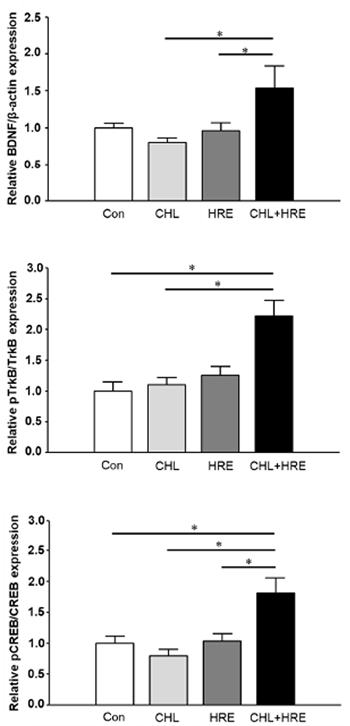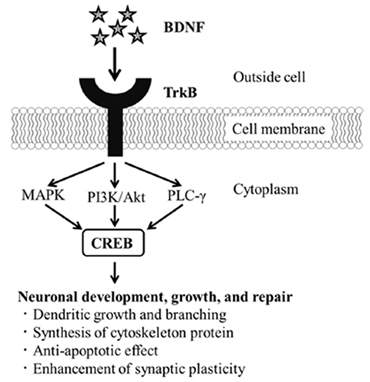- TOP
- List of reports
- Efficacy of Combined Use of Chlorella and Ascidian-derived Plasmalogen for Prevention of Dementia
Efficacy of Combined Use of Chlorella and Ascidian-derived Plasmalogen for Prevention of Dementia
【Scientific information】
Research and Development Department, Sun Chlorella Corporation
Efficacy of Combined Use of Chlorella and Ascidian-derived Plasmalogen for Prevention of Dementia
Published in the academic journal "Molecules Vol. 29" (Impact factor 4.6)
- Objectives
- The increase in dementia is a social problem not only in Japan but also worldwide. The
world's number of people with dementia is estimated to be approximately 57 million in 2019.
In Japan, the number of people with dementia aged 65 years or older is approx imately 6
million as of 2020, and expected to increase to approximately 8 million in 2040. Efforts to
prevent the spread of dementia are becoming more important. So, along with developing
drugs, the development of preventive measures by using foods that ca n be taken daily or their
ingredients are expected.
It has been reported that 65-70% of Japanese dementia patients have Alzheimer's dementia, and as one of the causes of this type of dementia, plasmalogen, which is a kind of phospholipid in the brain, is a ttracting attention. The human brain is a very lipid-rich tissue, and ethanolamine plasmalogen accounts for approximately 8% of the dry weight. Plasmalogen is a component of the cell membranes of nerve cells, and involved in information exchange, transmiss ion, etc. in the brain. It is known that plasmalogen decreases in the brain of patients with Alzheimer's disease.
Ascidian, a chordate, is evolutionarily similar to vertebrate, and rich in plasmalogen which contains DHA (docosahexaenoic acid) abundantly fo und in the human brain. Ascidian-derived plasmalogen has been reported to inhibit apoptosis of neuroblasts, suppress aggregation of amyloid β, and improve cognitive function. Chlorella is very rich in lutein, which is the main antioxidant component of huma n red blood cells, compared to other foods. A drinking test in middle-aged and elderly people has shown that chlorella intake may decrease peroxidized phospholipids in red blood cells (reducing the increase in senescent erythrocytes), improve oxygen supply to the brain tissue, and be useful in the prevention of dementia.
In this study, we examined the effects on cognitive functions of the combined use of ascidian-derived plasmalogen and chlorella, which are foods useful for the prevention of dementia.
- method
- The study was conducted by dividing 6-week old male rats into 4 groups (5 animals/group): Control group (Con; salad oil + ordinary feed), Chlorella group (CHL; salad oil + chlorella mixed feed), Ascidian extract group (HRE; ascidian extract + ordinary feed ), and Combination group (CHL+HRE; ascidian extract + chlorella mixed feed). Ascidian extract, containing ascidian-derived plasmalogen at a dose of 0.07 mg/day, was administered once daily for one week. Additionally, chlorella powder was fed as part of a c ombined feed containing 1% chlorella, at a dose of 200 mg/day, for one week. After the 1-week treatment, we measured the activation of the brain derived neurotrophic factor (BDNF) signaling system (BDNF TrkB CREB signaling system)* in the hippocampus, whic h is involved in learning and memory.
- Results
- The expression amount of hippocampal BDNF showed no significant difference in the CHL and HRE groups compared to the Con group, but in the CHL+HRE group it showed a tendency toward increase (p = 0.078) with a significant increase compared to each single treatment group (Figure 1A). Furthermore, the activation of TrkB, which is a specific receptor of BDNF, significantly increased in the CHL+HRE group compared to the Con group (Figure 1B). The subsequent activ ation of CREB also significantly increased in the CHL+HRE group compared to the Con, CHL, and HRE groups (Figure 1C).
- Figure 1. Effects of chlorella, ascidian extract, and their combination on the hippocampal
BDNF signaling system
Hippocampal BDNF expression, TrkB activation, and CREB activation were measured by Western blotting. The BDNF expression, TrkB activation, and CREB activation were expressed as ratios compared to the control group (Con). The graph shows mean ± standard err or (5 animals/group)group);p< 0.05 was considered significant. - Con,
control group ; CHL , chlorella group (chlorella powder 200 mg/day was administered);
HRE , ascidian extract group (ascidian derived plasmalogen 0.07 mg/day was administered);
CHL+HRE , combination group (chlorella powder 200 mg/day + ascidian derived plasmalogen
0.07 mg/day was administered).
This study confirmed that the BDNF TrkB CREB signaling system is activated by the combination of chlorella and ascidian derived plasmalogen, despi te the relatively short duration of one week, at doses that have not been shown to be effective in each single treatment. The combination of chlorella and ascidian derived plasmalogen promotes the activation of the BDNF signaling system, and it is expected that these ingredients improve cognitive function by different mechanisms. Therefore, it was suggested that the combination of both ingredients may exert a synergistic preventive effect on dementia.

Terminology
- *Explanation of the term Brain derived neurotrophic fac tor (BDNF) is a neurotrophic factor (neurotrophin), which plays an important role in learning and memory. The most influential mechanism where BDNF has an effect on the generation, growth, and repair of nerve cells is the pathway binding to tropomyosin rec eptor kinase B (TrkB), a specific receptor on the cell surface, to operate via cAMP response element binding protein (CREB), a transcription factor (BDNF TrkB CREB signaling system) (see the figure below ). It is known that the expression level of BDNF is low in the brain of Alzheimer's disease patients. So, it is considered useful to investigate the expression levels of BDNF, TrkB and CREB as the criteria to evaluate the progression of Alzheimer's disease.

- Figure. Generation, growth, preservation, and repair of nerve cells by the BDNF signaling system
BDNF , brain derived neurotrophic factor ; TrkB , tropomyosin receptor kinase B ; CREB , cyclic AMP response element binding protein ; MAPK , mitogen activated protein kinase ; PI3K/Akt phosphatidylinositol 3 kin ase/protein kinase B ; PLC-γ , phospholipase C-γ
Details
- Journal:
- Molecules, VOL.29 2024
- Title:
- Simultaneous Intake of Chlorella and Ascidian Ethanolamine Plasmalogen Accelerates Activation of BDNF TrkB CREB Signaling in Rats
- Author:
- Hideo Takekoshi 1) Masaki Fujishima 1) Taiki Miyazawa 2) Ohki Higuchi 2,3 Takahiko Fujikawa 4), Teruo Miyazawa 2)
- Affiliation:
- 1) Sun Chlorella Corp., 2) New Industry Creation Hatchery Center (NICHe), 3) Biodynamic Plant Institute Co., Ltd., 4) Suzuka University of Medical Science
This information is presented in academic journals or conferences and is not intended to
promote the marketing of products.
Contact link for this study report





